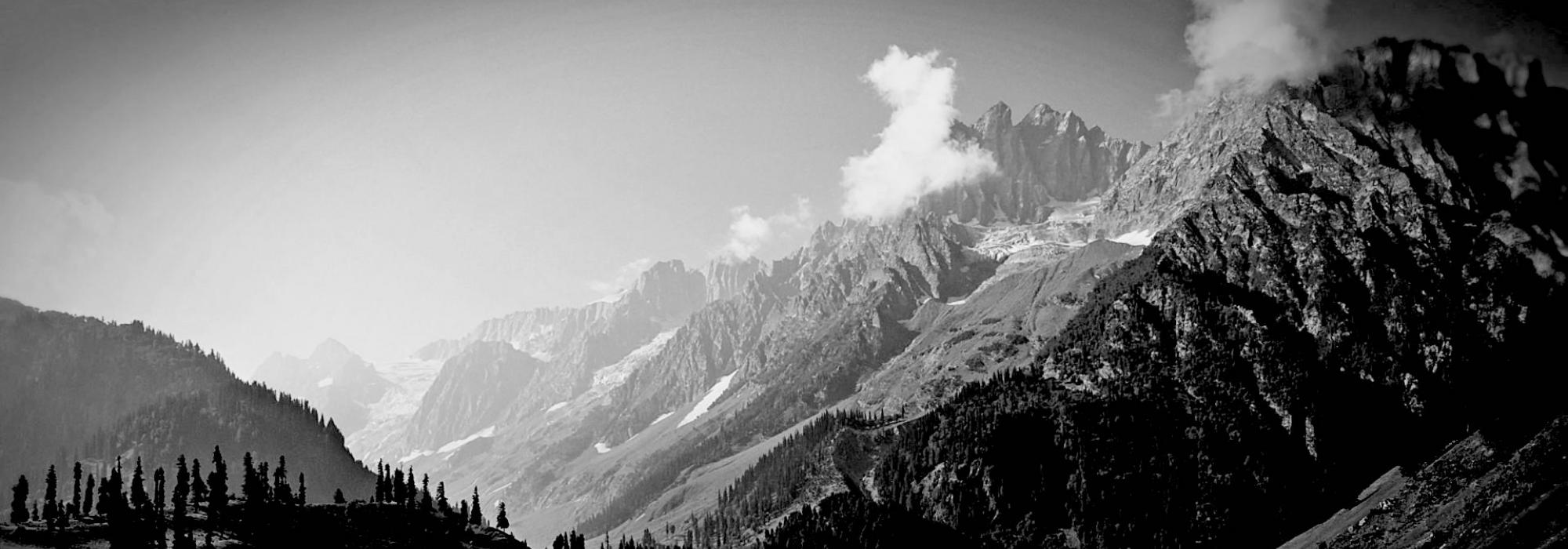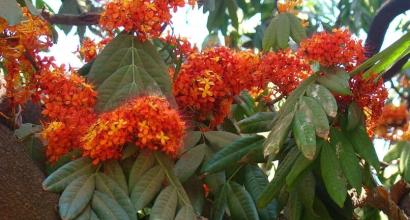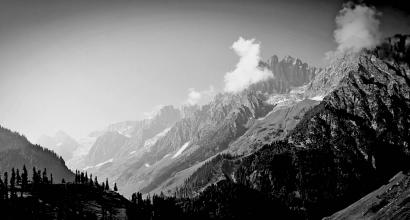In about 1910, when Mahāmahopādhyāya T. Ganapati Shastri was travelling to procure books in the southern regions of Travancore, he happened to lay his hands upon a manuscript that contained the following Sanskrit plays: Svapna-nāṭakam, Pratijñā-nāṭikā, Pañcarātram, Cārudattam, Dūta-ghaṭotkacam, Avimārakam, Bāla-caritam, Madhyama-vyāyogaḥ, Karṇabhāram[1], Ūru-bhaṅgam, Abhiṣeka-nāṭakam, Pratimā-nāṭakam, and Dūta-vākyam. He published the Svapna-nāṭakam with the title Svapna-vāsavadattam. He indicated in his introduction to the play that it was authored by the poet Bhāsa in about 5th or 6th Century BCE and that the same person had authored the other plays as well. This was merely his conjecture. None of the plays declare their author and there is no solid evidence for their dating either.
The summary of his arguments is as follows:
The plays are, perhaps, authored by the same person because of
- the similarities in maṅgala-padyas at the beginning of the plays, which invariably have mudrālaṅkāra – a pun on the names of the important characters of the play;
- the sthāpanā of the poet and his work
- similar kind of bharata-vākyas,
- similarity in style, language, etc.
From the following verse of Rājaśekhara (about 1000 CE), we get to know that Bhāsa is the author of a play called Svapna-vāsavadatta –
bhāsa-nāṭaka-cakre'pi chekaiḥ kṣipte parīkṣītum!
Svapna-vāsavadattasya dāhako'bhūnna pāvakaḥ ॥
[When scholars subjected the Bhāsa’s plays to the fire ordeal, Svapna-vāsavadatta came out unharmed]
The Svapna-vāsavadatta, which had won the hearts of its readers and is referred to in this verse, could perhaps be the one discovered by T. Ganapati Shastri in Travancore. If Svapna-vāsavadatta is actually authored by Bhāsa, it is likely that the other plays were authored by him as well.
In the opening segments of his play Mālavikāgnimitra, Kālidāsa says that Bhāsa, Saumilla, and Kaviputra were playwrights of the highest order. There are many similarities in the emotive content of Kālidāsa’s and Bhāsa’s plays. Thus, the author of Svapna-vāsavadatta and other plays must have been Bhāsa, who has been praised by Kālidāsa.
This argument has been accepted by many Indian and western scholars. But they date Bhāsa between the first and the fourth century CE. In order to decide the date of Bhāsa, we must ascertain the date of Kālidāsa but the latter has not been fixed yet.[2] A few scholars such as Dr. Barnett do not agree with the above view. They say that the plays discovered by Ganapati Shastri were authored between the seventh and the ninth centuries CE by a person from Kerala; they also go to the extent of saying that the Svapna-vāsavadatta available today is a stage adaptation made by the actors in Kerala, based on Bhāsa’s original work. There is strong evidence to justify their argument. Works like Sadukti-karṇāmṛta and Śārṅgadhara-paddhati quote verses of Bhāsa but those particular verses are not found in any of the thirteen plays now attributed to him. So, does that mean that the compilers of these verses made a mistake? Or, the verses may be found in plays of Bhāsa which have not been discovered yet.[3] Nevertheless, the author and date of these works is debatable. The place where they were composed is also unknown. As these plays were discovered only in Kerala and also contain words such as āma, bhṛṅgāra, and sambandha used in the sense popular only in the South, they were perhaps composed by a poet from the South. Moreover, the plays also have verses dedicated to Balarāma, the deity of theatre in Tamil Nadu. However, we cannot be sure about our assessment of his region of origin. Nevertheless, we will go ahead discussing his plays with the assumption that their author was the self-same Bhāsa referred by Kālidāsa.
In 1961, a person by the name Jīvarāma Kālidāsa Śāstrī, a resident of a town called Gondal in the Kathiawar province published a Sanskrit play called Yajña-phala based on two paper manuscripts. The manuscripts were dated to 1670 CE and 1794 CE and were in the Devanāgarī script. Thus, the manuscripts cannot be classified as stage versions made by Chakyars. The ones discovered by Ganapati Shastri were in the Grantha script on tāla-patras and as mentioned before, were found at the southern tip of the country.
The play Yajña-phala bears semblance with Svapna-vāsavadatta and the other thirteen plays in that the sūtradhāra comes onto the stage after the Nāndī.[4] Similarly, the maṅgala-śloka has the mudrālaṅkāra and the play has aspects such as sthāpanā. From its storyline, structure, the author’s skill in putting together the story, the presence of verses that capture the conversation between characters, the gradual transformation of Kaikeyī, the larger proportion of verses, and other features, Yajña-phala can be considered a prequel to Pratimā-nāṭaka. If it is established that Pratimā-nāṭaka is authored by Bhāsa, it is likely that Yajña-phala is by him as well.
The story of Yajña-phala revolves around the incidents of the Bāla-kāṇḍa of the Rāmāyaṇa. The birth of Rāma, Lakṣmaṇa, Bharata, and Śatrughna, their growth, education, and marriages are said to be the fruits of three yajñas. Their birth is a result of the putrakāmeṣṭi performed by Daśaratha, learning and acquiring of weapons because of the protection they provided for Viśvāmitra’s yāga, and weddings due to Rāma breaking the bow at the end of Janaka’s yāga. Throughout the play, ‘yajña-phala’ – ‘fruit of the yajña’ is a repetitive motif. References are made to the idea in the dialogues and it comes as an undercurrent all through.
The plays of Bhāsa can be classified into four groups as a function of the source from which they derive their story –
- Bṛhatkathā – Svapna-vāsavadatta, Pratijñā-yaugandharāyaṇa, Avimāraka, Cārudatta
- Rāmāyaṇa – Abhiṣeka-nāṭaka, Pratimā-nāṭaka, Yañja-phala
- Bhāgavata – Bāla-carita
- Mahābhārata – Pañcarātra, Madhyama-vyāyoga, Dūta-vākya, Dūta-ghaṭotkaca, Karṇa-bhāra, Ūru-bhaṅga
The current series of articles is an enlarged adaption of Prof. A. R. Krishnasastri's Kannada treatise Saṃskṛta-nāṭaka. They are presented along with additional information and footnotes by Arjun Bharadwaj.
[1] The play Karṇabhāram is also called by the names Kavaca-dāna and Kuṇḍalāharaṇa; Ūru-bhaṅgam is also known as Gadāyuddha, Abhiṣeka-nāṭakam as Rāmābhiṣeka, Pratimā-nāṭakam as Pratimā-rāma and Pratimā-daśaratha. These alternate names are the findings of Manavalli Ramakrishna Kavi – J.A.H.R.S., Vol. III
[2] Research has now shown that belonged to the Kālidāsa Gupta period and was, perhaps, patronised by the kings of the Gupta dynasty; he thus lived between the fourth and the sixth century CE.
[3] Some scholars also argue that Bhāsa had authored a work on the Nāṭyaśāstra and say that he had quoted his own verses in the treatise.
[4] nāndyante tataḥ praviśati sūtradhāraḥ




































